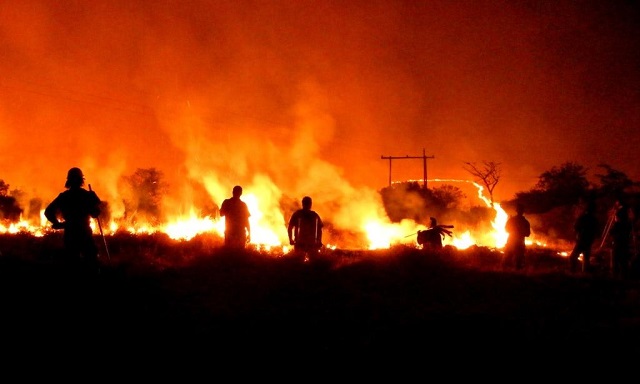EDITORIAL COMMENT: Prevent veld fires this dry season

The fire season for this year started yesterday and will run until the end of October.
Every year, the three months from August to October see much environmental destruction and human injury and deaths due to veld fires. This time of the year is conducive for the fires given that vegetation would be dry thus any cigarette stub left smoldering can be a source of a huge inferno that burns grass, trees, animals and even people, leaving the environment barren and poorer.
In April the Environmental Management Agency (EMA) predicted that this year, the problem is likely to be bigger than previous seasons because the heavy rains that pelted the country last summer resulted in much vegetation growing.
EMA spokesperson Mr Steady Kangata predicted the possibility of wild and fierce fires during the dry period the 2017 fire season.
“As such, EMA urges all stakeholders; Government ministries and departments, farmers, motorists and the general public to undertake fire pre-suppression measures by reducing biomass through hay baling, thatch grass combing and fireguard construction,” he said then.
Therefore as we enter the fire season, we must ensure that we prevent veld fires and in cases when they occur, we are ready to put them out before they spread.
A total of 1 652 fire incidents were recorded during the 2016 fire season resulting in 1 197 335 hectares of land being destroyed. The blazes killed seven people while property worth $84 787 and plantations valued at $152 736 were destroyed by the veld fires. Agricultural produce, farm equipment and livestock valued at $4 046 were also lost last year.
The 2016 fire incidents were a drop from the 1 881 recorded in 2015 when 1 336 747 hectares of land were destroyed. This translates to 10 percent reduction in the area destroyed by veld fires and a 12 percent reduction in fire incidents.
Mashonaland West recorded the highest fire incidents which consumed 631 622 hectares. Significant fires were also recorded in Mashonaland Central (188 219 ha), Matabeleland North (157 550ha) and Mashonaland East (112 729ha).
The area burnt by veld fires in Masvingo Province last year dropped to 7 495, 14 hectares as compared to 75 708,17 hectares burnt during the prior year.
The majority of the fires recorded across the country occurred in new resettlement areas destroying 599 444 hectares while another 145 484 ha were destroyed in communal areas. Protected areas were also not spared with 22 292 ha lost on forest lands while a further 106 899 destroyed in national parks.
Such destruction is unnecessary thus must be avoided at all costs.
Our people, particularly farmers and smokers must shun activities that pose a risk to the environment. They need to understand that our vegetation and animals are important to human life so must be protected at all times. A land without grass cannot support livestock as they will not have anywhere to graze. The fires obviously burn small animals including insects and, sometimes, bigger animals. A landscape without vegetation is susceptible to erosion of the soil through agents such as rain water and wind.
Those who start fires that they cannot put out need to understand that when they do so they are threatening their own lives as well. Their actions can destroy homes too.
Indeed our strongest weapon against, rather our first line of defence against veld fires is to prevent the uncontrollable fires.
If some among us start fires they need to take measures to do so at times when the infernos are less likely to grow out of control, such as in late afternoon.
When they do so they must be always armed with tools, among them tree switches, to beat the fire under control and only leave the places where they burn when they are convinced that the fire has completely died down.
Farmers must heed EMA’s advice to always make and maintain fireguards around their properties. They should be at least nine metres wide. This width makes it less likely for any veld fire at one farm to spread to neighbouring properties. They will remain localised so if destruction is to occur it will happen at fewer properties and damage less.
Farmers who have tall grass on their properties are advised to cut and bale it. This serves multiple purposes for the farmer – they can always use the grass to feed their livestock in the leaner period of the year. Short grass on a farm reduces the risk uncontrollable blazes. At the same time, a farm with short grass looks neater and better organised than one that has unkempt vegetation.
If fires are to break out, communities are encouraged to co-operate through committees formed for the purpose, to apply the skills imparted to them by EMA in fighting the fires.












Comments